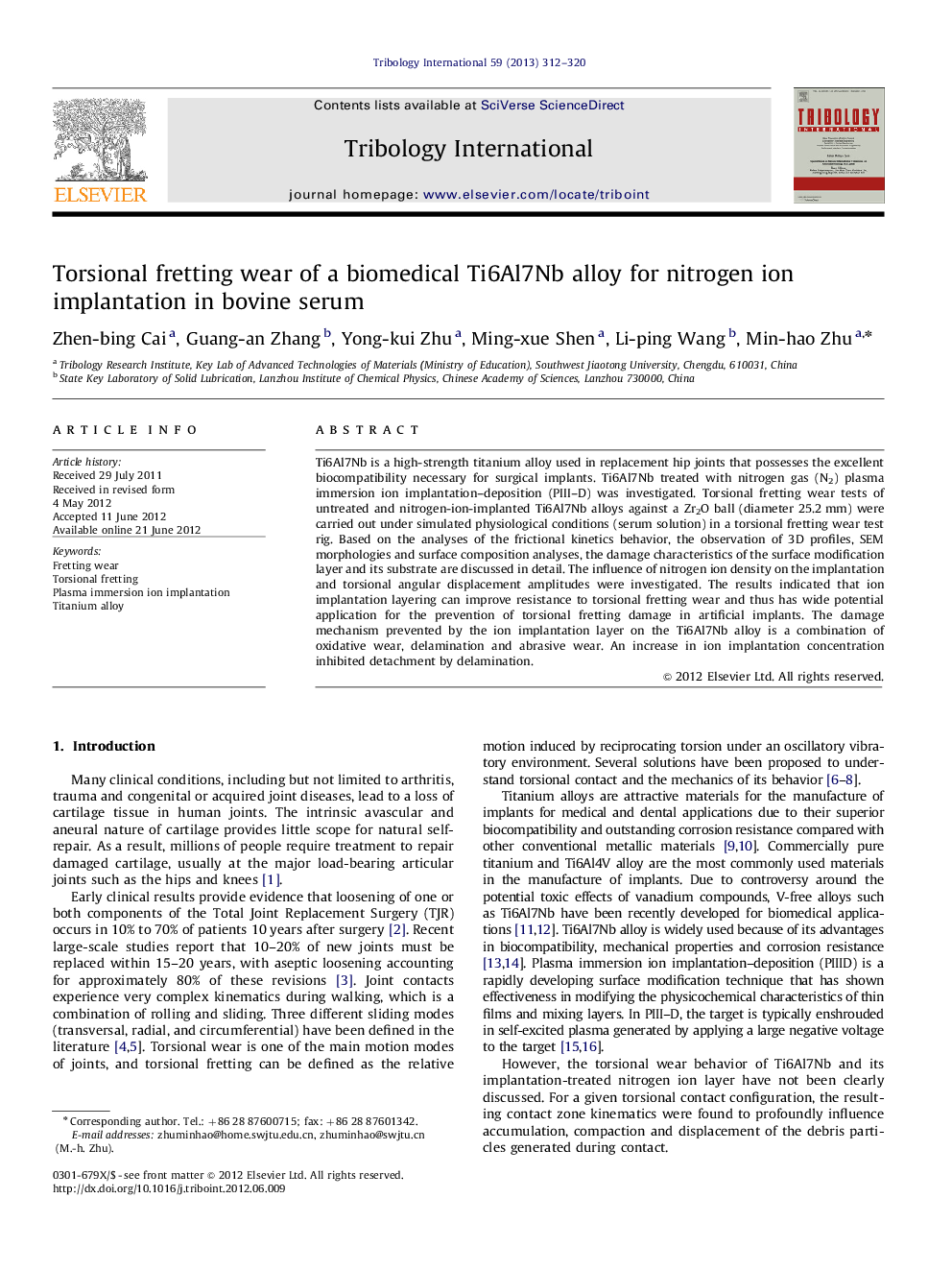| Article ID | Journal | Published Year | Pages | File Type |
|---|---|---|---|---|
| 615099 | Tribology International | 2013 | 9 Pages |
Ti6Al7Nb is a high-strength titanium alloy used in replacement hip joints that possesses the excellent biocompatibility necessary for surgical implants. Ti6Al7Nb treated with nitrogen gas (N2) plasma immersion ion implantation–deposition (PIII–D) was investigated. Torsional fretting wear tests of untreated and nitrogen-ion-implanted Ti6Al7Nb alloys against a Zr2O ball (diameter 25.2 mm) were carried out under simulated physiological conditions (serum solution) in a torsional fretting wear test rig. Based on the analyses of the frictional kinetics behavior, the observation of 3D profiles, SEM morphologies and surface composition analyses, the damage characteristics of the surface modification layer and its substrate are discussed in detail. The influence of nitrogen ion density on the implantation and torsional angular displacement amplitudes were investigated. The results indicated that ion implantation layering can improve resistance to torsional fretting wear and thus has wide potential application for the prevention of torsional fretting damage in artificial implants. The damage mechanism prevented by the ion implantation layer on the Ti6Al7Nb alloy is a combination of oxidative wear, delamination and abrasive wear. An increase in ion implantation concentration inhibited detachment by delamination.
► The properties of Ti6Al7Nb treated with nitrogen gas (N2) plasma immersion ion implantation–deposition (PIII–D) was investigated. ► The influence of nitrogen ion density on the implantation and torsional angular displacement amplitudes was also investigated. ► Various wear mechanisms for the tribology behavior of the implantation-ion-treated and untreated alloys are disclosed.
